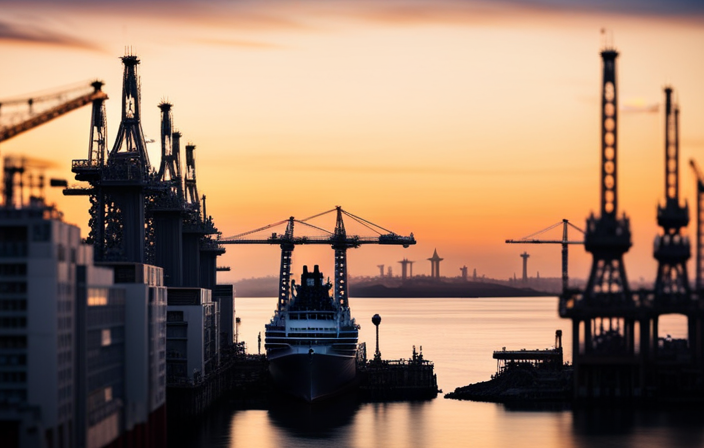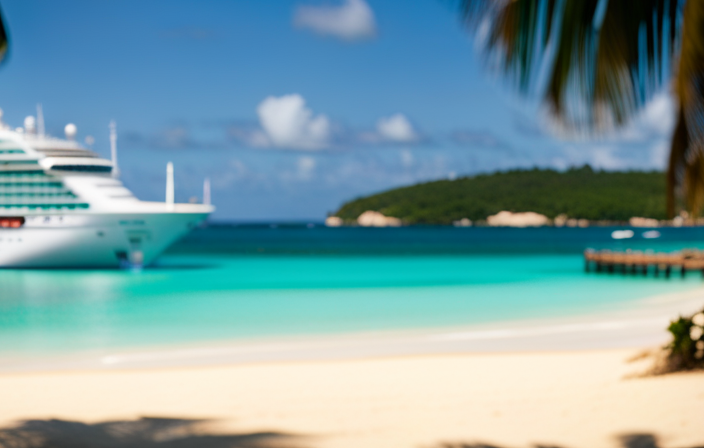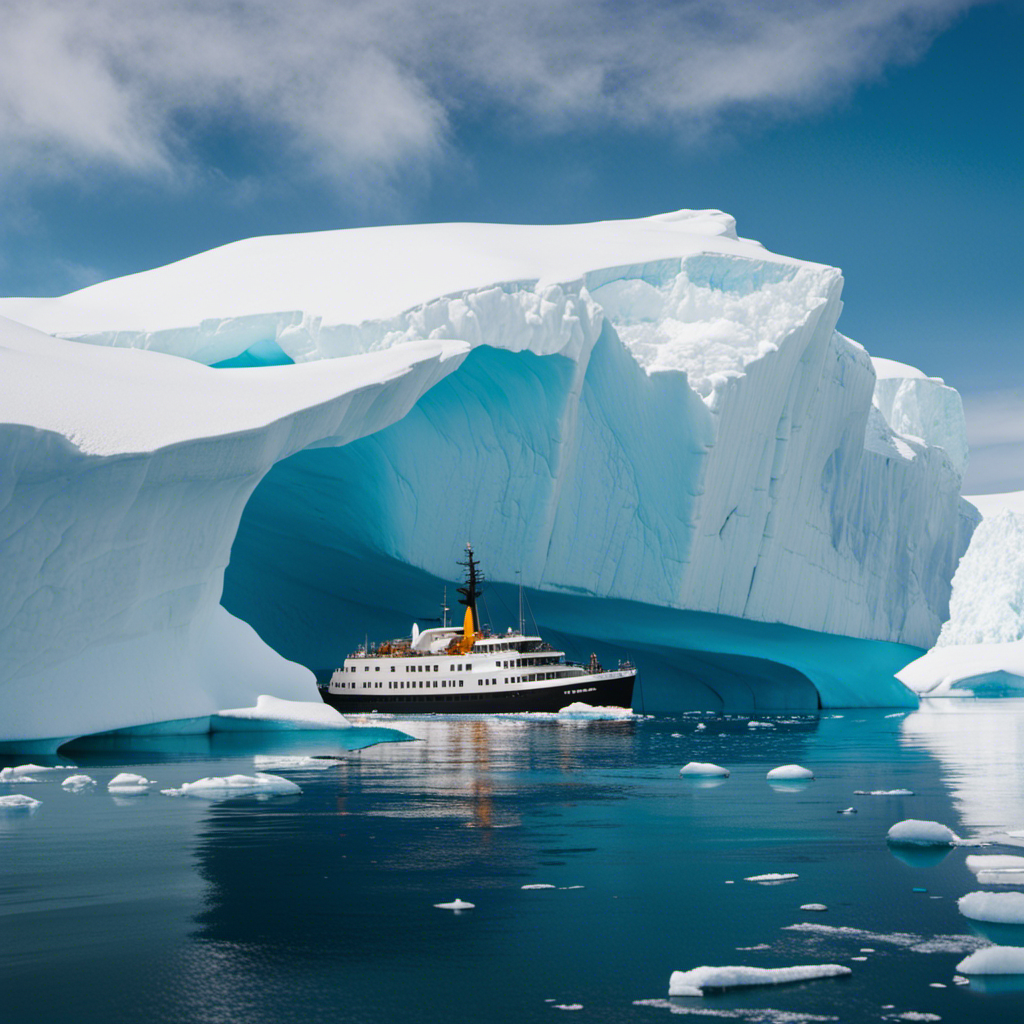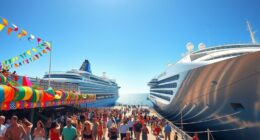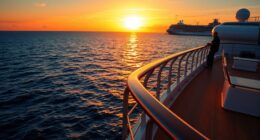Hello! Welcome as we embark on a voyage to delve into the expensive endeavor of constructing cruise ships. Get ready to explore the complex realm of ship building, operation, and upkeep. Just like a captain navigating unfamiliar waters, we will guide you through the financial aspects, the construction process, and the continuous expenses associated with these enormous vessels.
Building a cruise ship is no small feat. It’s a grand endeavor that requires substantial capital, with price tags reaching into the billions. But it’s not just the initial cost; maintaining and updating these floating cities is an ongoing expense that shouldn’t be underestimated. From crew salaries to fuel costs, the financial challenges are vast.
So, fasten your seatbelts, or should I say life jackets, as we embark on this industry-focused exploration. Together, we’ll uncover the fascinating details behind the costly investment of building cruise ships.
Key Takeaways
- Building a cruise ship is a significant investment, with costs ranging from $300 million to over $1 billion.
- The construction process takes 12 to 18 months and involves thousands of crew members.
- Refurbishing a ship is a cheaper alternative to building a new one, costing millions.
- Operating a cruise ship requires significant expenses, including crew salaries and fuel costs.
The Financial Aspect
Building a cruise ship is a significant financial investment, as the cost can range from $300 million to over $1 billion. The financing options available for such a massive project are crucial in determining the feasibility and success of the venture.
Cruise lines often seek loans from banks or financial institutions to cover the construction costs. The return on investment plays a crucial role in determining the viability of the project. Cruise lines aim to recoup their investment through ticket sales, onboard purchases, and other revenue streams. They carefully analyze market demand, target audience preferences, and competition to ensure a profitable return.
The financial aspect of building a cruise ship requires meticulous planning, strategic decision-making, and a thorough understanding of the industry’s dynamics.
Construction Process
Crafting a cruise ship is like orchestrating a grand symphony, with each segment meticulously constructed and later harmoniously welded together.
The construction process of a cruise ship is a massive undertaking that requires the involvement of a dedicated workforce. Thousands of crew members work tirelessly for 12 to 18 months to bring the ship to life.
The ship is built in segments, with each piece carefully designed and manufactured to fit seamlessly with the others. From the hull to the cabins, every aspect of the ship is meticulously crafted to ensure functionality, safety, and comfort for passengers.
The workforce’s attention to detail and expertise is crucial in creating a vessel that can withstand the challenges of the open sea while providing an unforgettable experience for its guests.
Operating and Maintenance Costs
Maintaining and operating a cruise ship involves significant expenses, including crew salaries, fuel costs, and the ongoing upkeep of amenities and supplies. These costs can quickly add up, with some large ships spending over $180,000 on fuel per day alone. Additionally, cruise lines must consider the environmental impact of their operations and implement cost-saving measures to mitigate their carbon footprint.
One way cruise lines are addressing these concerns is by investing in new technologies and alternative fuels that reduce emissions. For example, some ships are being equipped with advanced air pollution control systems and are transitioning to cleaner fuels such as liquefied natural gas (LNG). These initiatives not only help protect the environment but can also lead to long-term cost savings by reducing fuel consumption.
Furthermore, cruise lines are implementing energy-efficient practices onboard to minimize energy usage. This includes utilizing LED lighting, optimizing HVAC systems, and implementing waste management and recycling programs.
In conclusion, while operating and maintaining a cruise ship comes with significant expenses, cruise lines are taking steps to minimize their environmental impact and find cost-saving measures. By investing in innovative technologies and adopting energy-efficient practices, they can achieve a balance between profitability and sustainability.
Frequently Asked Questions
How long does it take to design a cruise ship before the construction process begins?
Designing a cruise ship before the construction process begins is like crafting the blueprint for a magnificent voyage. The design timeline can span several months, carefully considering every aspect to create a ship that will delight passengers and meet their needs.
What are some common challenges faced during the construction of a cruise ship?
During the construction of a cruise ship, common challenges include construction delays and technical complexities. These challenges can arise from the complexity of shipbuilding processes, the integration of various systems, and the need for adherence to safety regulations.
How often do cruise ships undergo refurbishments?
Cruise ships undergo refurbishments periodically to maintain their appeal and standards. The frequency varies, but it’s common for ships to be refurbished every 5-10 years. These refurbishments can cost millions, but they are a cost-effective alternative to building new ships.
What are some key factors that influence the operating costs of a cruise ship?
Crew wages and fuel expenses are two key factors that heavily influence the operating costs of a cruise ship. These expenses can amount to millions per year and are essential for the smooth operation and maintenance of the ship.
How do cruise lines prioritize innovation in ship design and features?
Cruise lines prioritize innovation in ship design and features by focusing on cruise ship sustainability and the impact of technology. They aim to incorporate eco-friendly practices and utilize advanced technologies to enhance guest experiences and reduce environmental impact.

